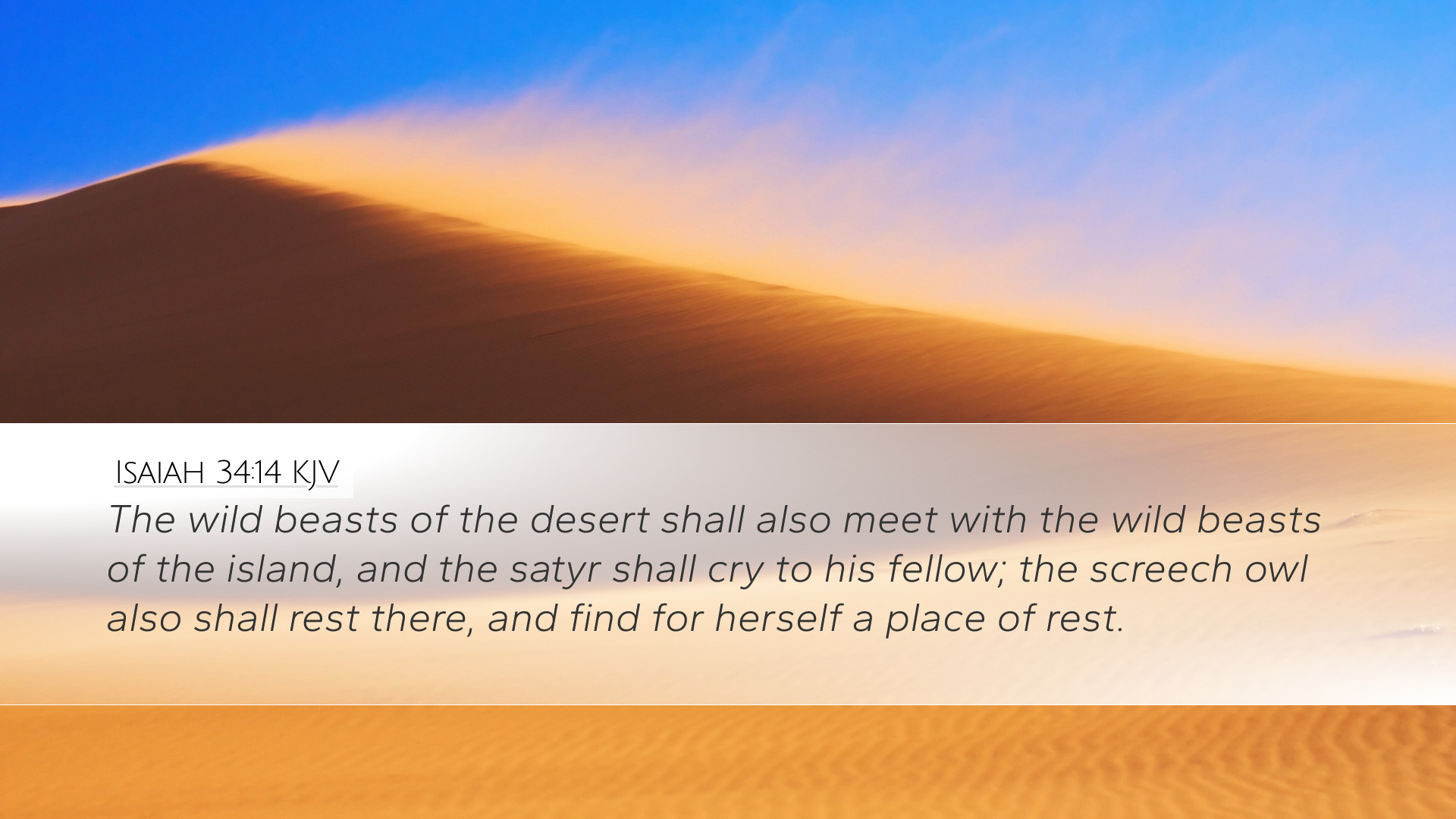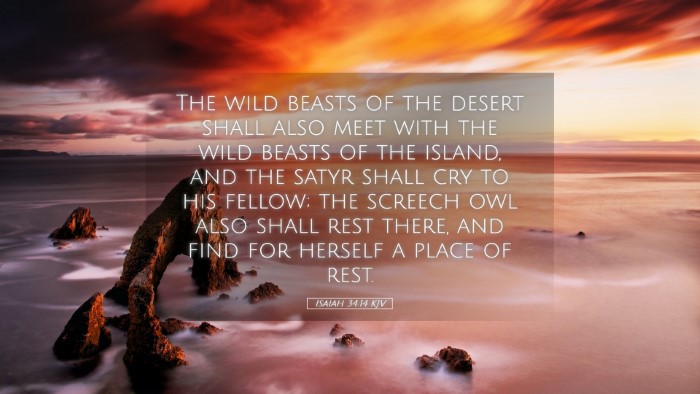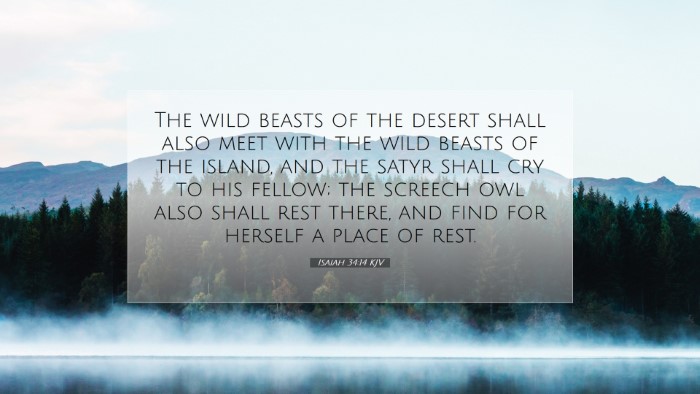Commentary on Isaiah 34:14
Isaiah 34:14 (ESV): "And the wild animals shall meet with the hyenas; the wild goat shall cry to his fellow; indeed, there the night hag shall settle and find for herself a resting place."
Introduction
Isaiah 34 serves as a striking depiction of God's judgment upon the nations, with a particular focus on Edom. The imagery in this verse is particularly poignant as it draws on the natural world to illustrate divine retribution. The interplay between animals and the desolate landscape evokes a sense of abandonment and desolation that accompanies God's judgment.
Thematic Overview
This verse encapsulates themes of wilderness, abandonment, and the haunting presence of God’s judgment. Isaiah paints a vivid picture of a changed landscape, one that becomes the dwelling place for wild beasts rather than for humans, illustrating the finality of God’s discipline.
Commentary Insights
Matthew Henry's Perspective
Matthew Henry emphasizes the desolation that follows divine judgment, interpreting the gathering of wild animals as symbolic of destruction where once human beings thrived. He notes that the references to "wild animals" such as hyenas and wild goats suggest a reversal of the created order where chaos reigns in place of civilization.
Henry also highlights the concept of creatures finding a 'resting place' in a desolate land, which he sees as a metaphor for spiritual desolation. This means that places once known for human habitation and worship are now overrun by forces that signify God's displeasure with the sins committed by nations.
Albert Barnes' Commentary
Albert Barnes focuses on the prophetic nature of Isaiah’s message, arguing that it not only pertains to historical Edom but also serves as a warning to the nations in general. He interprets the mention of “night hag” (often correlating with Lilith in Jewish folklore) as representing malevolent forces that thrive in darkness, capturing the essence of evil that feeds on desolation.
Barnes also discusses how the verse demonstrates the transition from human flourishing to stark wilderness, emphasizing the profound impact of God’s judgment. The reference to the wild goat calling to its fellow could symbolize the actual cry of a people once prosperous now reduced to mere survival amidst the wild beasts.
Adam Clarke's Commentary
Adam Clarke provides a detailed etymological analysis, noting that the 'wild goats' mentioned could refer not only to the literal animals but also to spiritual leaders who have succumbed to depravity. Clarke's interpretation suggests a societal collapse where even the collective moral fabric is torn apart.
Clarke expands on the 'night hag' as a representation of the ugly forces of evil that disrupt the peace of God’s creation. He believes that this imagery serves as a stark warning against abandoning God's ways, thus leading communities into chaos and destruction.
Literary and Theological Significance
The literary style of Isaiah employs vivid imagery and metaphors, drawing readers into a contemplative space regarding the consequences of sin. The theological implications are profound, pointing to God's sovereignty over creation, where His judgment extends beyond humanity to the very elements of nature. This verse forces readers to grapple with the reality of divine justice, contrasting the ideal state of creation with the implications of rebellion against God.
Application for Contemporary Readers
This passage serves as a reminder for congregations to acknowledge the seriousness of sin and the consequent repercussions. As pastors and theologians examine this text, they might draw parallels to modern society's moral decline and the socio-spiritual desolations present in stark communities today.
- Reflection on Judgment: It calls for introspection about the state of the church and its witness in the world.
- Awareness of Desolation: It serves as a warning to avoid the complacency that leads to spiritual desolation.
- Call to Return: The imagery can foster a renewed call to return to God, emphasizing repentance and restoration.
Conclusion
Isaiah 34:14 serves as a powerful reminder of the consequences that arise from moving away from God’s plans and purposes. It compels readers—especially those in pastoral and theological roles—to understand the gravity of spiritual apathy and to proclaim God’s justice as an integral part of His character. In invoking the imagery of the wilderness, the text not only reflects the historical realities of judgment confronting Edom but also acts as a timeless warning for all nations to seek the Lord earnestly.


